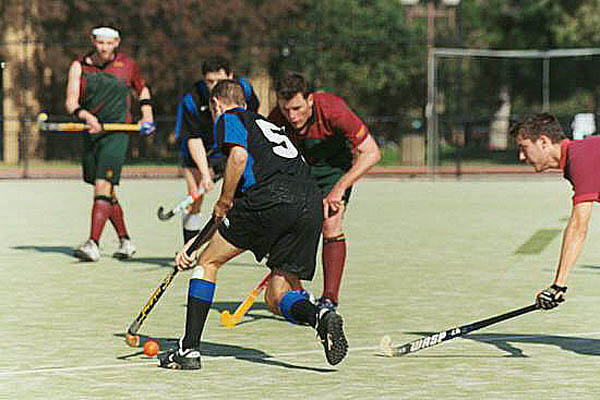A hockey stick is a hockey stick right? Wrong! Over the last two decades technological developments and the need to adapt to artificial playing surfaces has led to manufacturers producing an extensive range of hockey sticks to suits various skill levels, styles and budgets.
With the bewildering range of options available how do you choose the right implement for your own game?
1. The Rules
Hockey sticks can be made of any non-metallic material as long as it is fit for the purpose and not dangerous. The total weight must be no more than 737 grams and the ball speed after impact no greater than 98% of the stick speed.
All adult sticks have a handle of a similar diameter. This is approximately 25-30mm. The diameter is reduced accordingly for junior hockey sticks. The head must be a J or U shape and be flat on the left side and the whole stick must be able to be passed through a ring with a diameter of 51mm.
Any curvature along the shaft of a stick must be continuous and have a smooth profile along the entire length of the implement and must be along the face side or the back of the stick but not both and is restricted to 25mm. There are no regulations governing the overall length of a stick.

2. Which Material is Best?
Hockey sticks can be made of wood or composite materials like carbon fibre, Kevlar and fibreglass. So what material is best for your own game? Wooden sticks (usually maple) are cheaper so if you are on a restricted budget this may be your best option. Wood also has a soft feel when contacting with the ball which is preferred by many players including internationals. Wood, however, is a natural product and so varies in density and moisture content. This can result in what appear to be identical implements behaving very differently.
Wood is also prone to wear and tear on sandy surfaces and can retain moisture in damp conditions leading to a loss in power and the possibility of breaking. Composite sticks on the other hand are more consistent and durable. Once you are used to a particular model a replacement is likely to perform in the same manner. Composite sticks are also more powerful in relation to their weight and have larger sweet spots for power and accuracy. These sticks offer less refined feel although this problem is being steadily improved by new technological developments.
3. Length

Hockey sticks are generally between 36 inches and 38.5 inches in length although longer styles are available. In choosing the right stick for yourself the primary concern is how comfortable you feel and whether your body interferes with the control of the implement. Also consider if you are bending so low as to disrupt your vision of the field of play or are in danger of causing back trouble.
All these factors are height dependent but also consider that the longer the stick you can use the greater head speed and power you can generate. The best stick for you is the longest one you feel you can use whilst still maintaining feel and accuracy.
4. Weight
Again comfort and feel are the important factors. If your stick is too heavy you will lose control and waste energy. Your choice may also depend on what position you play in the team. Defenders have a greater need for power and must make stronger tackles and so may require a heavier stick whereas attackers have a greater need for control and ease of manoeuvre and so may benefit from a lighter stick.As a general rule, if in doubt, go for a lighter stick.
5. Head Size
There are three principle head sizes available, the shorti head, the Maxi head and the hook head. The Shorti head has a very small surface area for ball control but is excellent for fast dribbling. The Maxi head offers a larger hitting surface and sweet spot for increased power and gives the ability to trap the ball between the toe of the head and the shaft which is useful for dragging the ball if you are a taker of short corners.
The maxi head has now been almost universally adopted and is used by some 95% of top players. The hook head is a good choice for those who play in an upright position and is used by some forwards who have to pass and receive at great pace as it allows them to remain upright and continue moving at speed.
6. Shaft Bow
The bow is the degree of curvature along the playing surface of the stick. A large bow or curve,like that of the Gryphon Blade Pro II, can generate greater speed if used with the right technique by creating a slingshot effect and provide greater control of an incoming ball by reducing its tendency to travel up the stick.
Increased bow can, however, induce increased loft to the ball when struck and with the stick parallel to the ground, a tendency for the ball to veer to the left. These issues can be overcome by modifying your technique but if you are a beginner you may be best with a stick with a smaller bow like the Gryphon Predator.
Conclusion
When choosing your hockey stick it will be necessary to try out some of your potential choices to see how they suit your physique and style. Test as many models as you can within your budget and across time as your game develops you will gain a better idea of which strengths and weaknesses you need to accommodate with your choice of stick.

